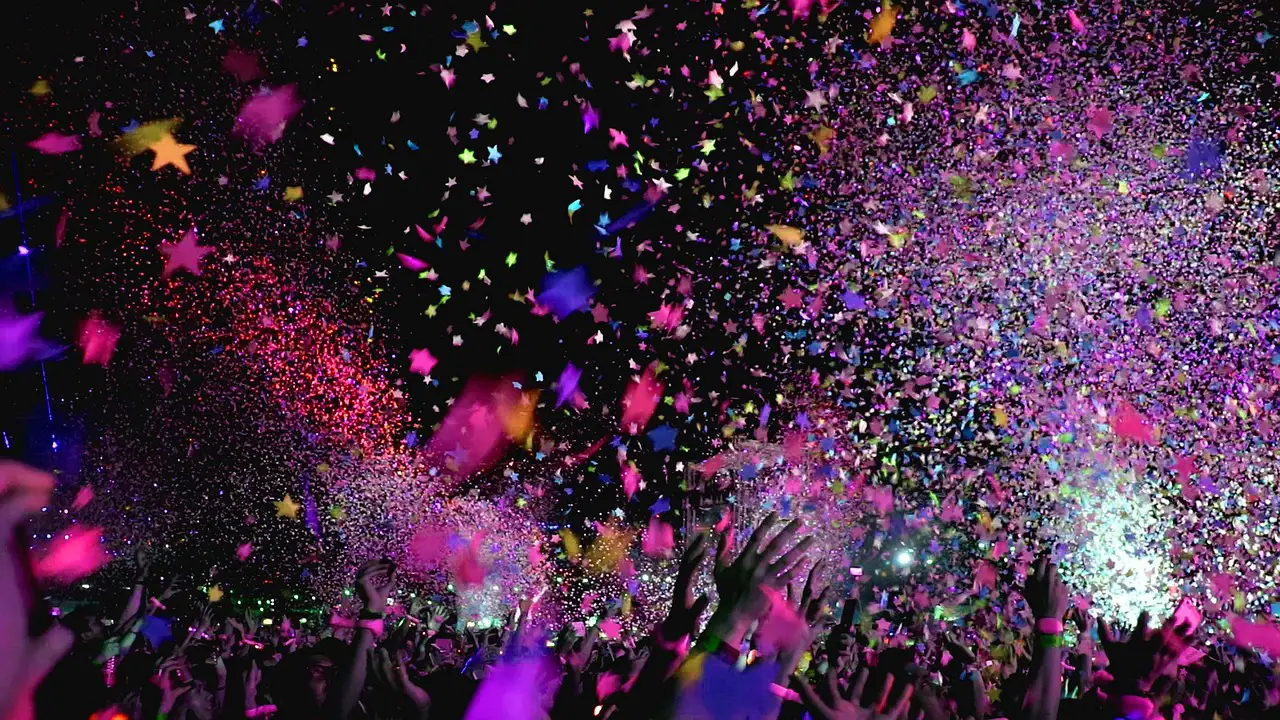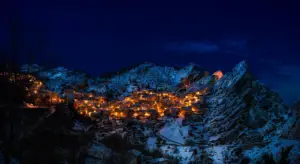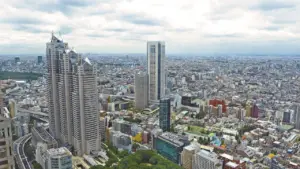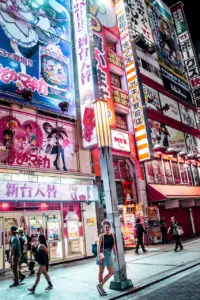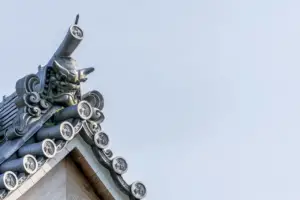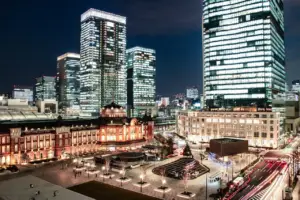Japan’s street culture is a vibrant and dynamic scene that showcases the country’s diverse cultural heritage. Busking, or the act of performing on the streets for voluntary donations, has become a popular form of street entertainment in Japan.
Many cities in Japan host street performance festivals that attract both local and international performers. These festivals provide a platform for performers to showcase their talents and connect with their audiences in a unique and intimate way.
This article offers a review of Japan’s street performances and busking festivals. The article discusses some of the notable festivals that take place in different cities across Japan, including the Yokohama Street Performance Festival, Koenji Awa Odori Festival, Fukuoka Street Performance Festival, Tokyo International Street Performance Festival, and Osaka Street Performance Festival.
The article also highlights some of the notable street performers in Japan and provides an overview of the country’s street culture.
Key Takeaways
- Japan’s street culture and busking scene is diverse, showcasing a range of artistic expressions such as music, magic, acrobatics, and more.
- Busking festivals in Japan have become popular and attract performers from different parts of Japan and even from other countries.
- Street performance festivals in Japan provide a platform for performers to showcase their talents and connect with their audiences.
- Street performances in Japan are a vibrant and dynamic part of the country’s cultural landscape, captivating audiences with their colorful and energetic performances.
Overview of Japan’s Street Culture and Busking Scene
The street culture in Japan encompasses a diverse range of artistic expressions, including busking, which has become a popular form of entertainment in the country’s urban centers. The Japanese busking scene has been steadily growing in popularity over the years, with many performers flocking to the streets to showcase their talents and entertain the public.
The country’s bustling metropolises, such as Tokyo and Osaka, are particularly known for their vibrant street culture, with performers of all kinds vying for attention and recognition. In recent years, Japan has also seen a rise in the number of busking festivals, which are organized across the country to celebrate and promote street performances.
These festivals bring together a wide variety of performers from different parts of Japan and even from other countries, creating a platform for cultural exchange and artistic collaboration. As a result, Japan’s busking scene has become increasingly diverse, with performers from different genres and backgrounds coming together to create a unique and dynamic atmosphere on the streets.
Overall, Japan’s street culture and busking scene continue to thrive, attracting audiences from all walks of life and providing a platform for artists to showcase their talents and connect with the public.
Yokohama Street Performance Festival
Celebrating the diversity of artistic expression, Yokohama’s annual street performance festival showcases a dynamic range of performers from across the globe. The festival, which first began in 2001, has since grown to become one of the biggest street performance events in Japan, attracting thousands of visitors every year.
Held over a weekend in the bustling streets of Yokohama’s Noge district, the festival offers a unique opportunity for both local and international artists to showcase their talents in front of a diverse audience.
Visitors to the Yokohama Street Performance Festival can expect a lively and vibrant atmosphere, filled with an array of sights and sounds. Here are some of the emotional responses that the festival evokes in its audience, through its various offerings:
- Joy: The festival’s high-energy performances, such as acrobatics and dance routines, are sure to leave visitors feeling exhilarated and uplifted.
- Wonder: The festival also features a variety of quirky and offbeat acts, such as fire-eaters and contortionists, that are sure to leave audiences amazed and intrigued.
- Cultural immersion: As the festival features performers from across the world, visitors can expect to experience a diverse range of cultures and artistic traditions.
- Community spirit: The festival’s open-air setting and diverse audience create a welcoming and inclusive environment that fosters a sense of community and togetherness.
Koenji Awa Odori Festival
Taking place in the lively streets of Koenji, this annual dance festival is a vibrant and colorful celebration of traditional Japanese culture.
The Koenji Awa Odori Festival, also known as the Koenji Awa Dance Festival or Koenji Awa Odori, is a two-day event held in August that attracts over a million visitors each year.
The festival originated in Tokushima Prefecture on the island of Shikoku, where the Awa Odori dance is believed to have originated over 400 years ago.
During the festival, over 10,000 dancers and musicians parade through the streets of Koenji, performing the Awa Odori dance.
The dance is characterized by its lively movements and energetic music, which is played on traditional Japanese instruments such as the shamisen, taiko drums, and fue flutes.
The dancers wear colorful yukata robes and straw hats, and their movements are synchronized with the music.
In addition to the dance performances, the festival also features food stalls, traditional games, and other cultural activities.
The Koenji Awa Odori Festival is a must-see event for anyone interested in experiencing the vibrant and colorful culture of Japan.
Fukuoka Street Performance Festival
One of the most exciting cultural events in Fukuoka is the annual Street Performance Festival.
The festival is a celebration of street performers and their art.
It is held every year in the Tenjin area of Fukuoka City and attracts thousands of visitors from around the world.
The festival features a variety of performances, including music, dance, magic, and acrobatics.
Performers come from all over the world to participate in the festival, making it a truly international event.
The festival is a great opportunity for visitors to experience the vibrant culture of Fukuoka and to enjoy the talents of some of the world’s most skilled street performers.
Overall, the Fukuoka Street Performance Festival is a must-see event for anyone interested in street performance and culture.
Tokyo International Street Performance Festival
The bustling streets of Tokyo come alive with an array of colorful and captivating performances during the annual International Street Performance Festival. This festival, which has been running for over 30 years, attracts performers from all over the world who showcase their talents in dance, music, acrobatics, and comedy. The festival is held in various locations throughout the city, including Yoyogi Park and Asakusa, and is free for all to attend.
One of the highlights of the festival is the diverse range of performances on offer. The festival attracts performers from a wide range of countries, including Japan, France, Spain, and Australia. The performances range from traditional Japanese dance to modern hip-hop, and from acrobatics to fire-eating. Visitors to the festival can explore the different locations and watch the performances of their choice, with the schedule of events available online. The festival is a celebration of creativity and diversity, and a testament to the power of street performance to bring people together.
| Country | Type of Performance |
|---|---|
| Japan | Traditional dance |
| France | Mime |
| Spain | Flamenco |
| Australia | Circus |
| USA | Beatboxing |
The table above showcases the variety of performances on offer at the Tokyo International Street Performance Festival. Each country brings their own unique style and flavor to the festival, making it an exciting and diverse event. The festival is a great opportunity for visitors to experience different cultures and artistic styles, and to celebrate the vibrant world of street performance.
Osaka Street Performance Festival
Osaka’s vibrant arts scene comes alive with a diverse range of international and local performers during the annual street performance festival. The festival, held every year in October, attracts a large number of tourists and locals alike to the bustling streets of Osaka.
The festival features a range of performances including music, dance, acrobatics, comedy, and magic. One of the highlights of the festival is the opportunity to see street performances from around the world. The festival invites performers from different countries to showcase their unique styles and traditions, providing a platform for cultural exchange.
In addition to the international performers, the festival also features local artists who add to the vibrant and dynamic atmosphere of the event. Overall, the Osaka Street Performance Festival is a testament to the city’s commitment to promoting the arts and culture, and is a must-see event for anyone visiting Osaka.
Notable Street Performers in Japan
A diverse range of artists can be found performing on the streets of Japan, showcasing their unique talents and drawing in crowds of intrigued onlookers. Among the notable street performers in Japan are the mimes, who use their bodies and facial expressions to tell stories and entertain the audience. They are often seen in Tokyo and other major cities, performing their acts with precision and fluidity.
Another popular street performer is the yosakoi dancer, who combines traditional Japanese dance with modern music and costumes. These performers can be seen at festivals and events throughout the country, captivating audiences with their colorful and energetic performances.
In addition to mimes and yosakoi dancers, Japan’s street performers also include musicians, magicians, acrobats, and fire-eaters. These artists bring a diverse range of skills and styles to the streets, showcasing their talents in front of a live audience. Many of these performers have gained a following and have even been featured in the media, helping to promote the street performance culture in Japan.
Overall, the street performance scene in Japan is a vibrant and dynamic part of the country’s cultural landscape, providing a unique and entertaining experience for locals and tourists alike.
Frequently Asked Questions
What are the regulations or permits required for street performers in Japan?
Street performers in Japan are required to obtain a permit from the local government in order to perform in public spaces. These permits are usually issued by the police or the city government and may have specific regulations regarding the type of performance, the location, and the duration of the performance.
In some cases, performers may also need to obtain permission from the owner of the public space they wish to use. The regulations and requirements for permits may vary depending on the city and the type of performance, but generally, performers are expected to follow certain rules and guidelines to maintain safety and order in public spaces.
Some of these rules may include restrictions on the use of amplifiers, the volume of the performance, and the use of fire or other dangerous props. Overall, street performers in Japan must comply with the regulations and obtain the necessary permits in order to perform legally and safely in public spaces.
How do street performers in Japan receive compensation or donations from their audiences?
Street performers in Japan typically receive compensation or donations from their audiences in various ways.
One common method is by placing a donation box or open instrument case in front of them, allowing passersby to drop coins or bills as they please.
Some performers also use mobile payment systems such as QR codes or apps to receive digital donations.
In addition, some festivals and events may provide performers with a predetermined fee or commission based on their performance.
However, it is worth noting that street performers in Japan are not necessarily focused on financial gain, but rather, on sharing their art and connecting with their audience.
Therefore, donations are seen as a form of appreciation for the performers’ efforts and skill rather than a primary source of income.
Are there any specific genres or styles of performance that are more popular in Japan’s busking scene?
In Japan’s busking scene, there are various genres and styles of performance that are popular among performers. These include music, dance, magic, comedy, and mime.
Music is one of the most common forms of busking, with performers playing a variety of instruments such as guitar, drums, and saxophone. Traditional Japanese instruments such as the shamisen and taiko drums are also popular.
Dance performances range from traditional Japanese dance to modern styles such as hip-hop and breakdancing.
Magic shows, comedy acts, and mime performances are also frequently seen on the streets of Japan.
The popularity of each genre may vary depending on the location and audience, but overall, Japan’s busking scene offers a diverse range of performances for spectators to enjoy.
What is the history behind Japan’s street performance culture and how has it evolved over time?
The street performance culture in Japan has a long history, dating back to the Edo period (1603-1868) when traveling performers entertained crowds with acrobatics, magic, and music.
However, the modern street performance scene in Japan emerged in the 1970s with the rise of the counterculture movement. Busking became a way for young people to express themselves and earn money while avoiding the traditional salaryman lifestyle.
Today, Japan’s street performance scene is diverse and vibrant, with performers specializing in a variety of genres such as music, dance, and comedy.
Over time, the government has become more supportive of street performers, with some cities hosting busking festivals and providing designated areas for performers.
However, there are still challenges facing street performers in Japan, such as strict noise regulations and limited performance spaces in urban areas.
How do street performers in Japan collaborate with each other or with other artists and performers in the community?
Street performers in Japan often collaborate with other artists and performers in the community to create dynamic and engaging performances.
Such collaborations can take many forms, ranging from impromptu jam sessions to carefully choreographed routines.
In some cases, street performers may join forces with musicians, dancers, or other performers to create multimedia performances that incorporate a range of different art forms.
These collaborations allow street performers to expand their repertoires, reach new audiences, and develop new skills.
Moreover, they help to foster a sense of community among Japan’s street performers, who often rely on one another for support and inspiration.
Overall, collaborations are an essential part of Japan’s street performance culture, allowing performers to create unique and captivating shows that reflect the diverse and vibrant artistic traditions of the country.
Conclusion
Japan’s street culture and busking scene offer a unique perspective on the country’s art and entertainment industry. The Yokohama Street Performance Festival is one of the most popular events, hosting both local and international performers.
The Koenji Awa Odori Festival is another significant street performance event, showcasing traditional Japanese dance and music. The Fukuoka Street Performance Festival is a relatively new addition to the scene, but it has garnered significant attention for its diverse range of performers.
The Tokyo International Street Performance Festival features an impressive lineup of street performers from all over the world, attracting a large and diverse audience. The Osaka Street Performance Festival is another notable event, featuring local and international performers, including musicians, acrobats, and magicians.
Some of the most notable street performers in Japan include Shigeyuki Kihara, a contemporary performance artist, and Eiko and Koma, a dance duo known for their innovative performances.
In conclusion, Japan’s street culture and busking scene provide an excellent platform for both emerging and established artists to showcase their talent and connect with diverse audiences. These festivals not only offer a unique perspective on Japan’s art and entertainment industry but also contribute to the country’s cultural heritage and tourism industry.
As the popularity of street performances and busking festivals continues to grow in Japan, it is exciting to see how this vibrant and dynamic scene will evolve in the future.


